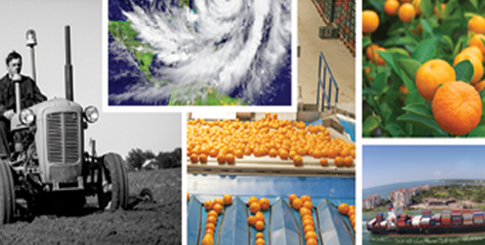The open-air wholesale market trend continues throughout the state as well, with the opening of the Fort Pierce Farmers Market near the Atlantic coast, also in 1940.
The Florida City Farmers Market is also established that year, located just 35 miles south of Miami. Both markets still exist today, with Fort Pierce ringing up annual sales of $26 million and Florida City in the range of $50 million each year.
In 1941, Florida’s Natural constructs a concentrate plant in Lake Wales to provide juice for the military during World War II.
In March 1942 the first county farm bureau is formed in Dade County. A month later, county bureaus are formed in Volusia, Hillsborough, St. Lucie, Lee, Manatee-Sarasota, Indian River, and Polk counties.
By the time the Florida Farm Bureau Federation celebrates its first birthday in Miami, membership has reached 1,180 members, and 17 county farm bureaus have been established.
The Florida Vegetable Committee of the Florida Farm Bureau is established in 1943 to serve Florida’s grower-shipper community.
The Committee (later renamed the Florida Fruit & Vegetable Association) seeks to enhance the business and competitive environment for producing and marketing Florida fruits and vegetables.
Lisa F. Lochridge, director of public affairs for today’s Florida Fruit & Vegetable Association, finds the original mission is still true today: The individual farmer cannot continue without the direct aid and moral support of an organized group of fellow farmers to cope with bureaucratic agencies, labor problems, constantly changing economic conditions, and restricted and controlled markets and supply.
“Even after decades of committed work on behalf of Florida’s specialty crop producers, it’s remarkable that we face many of the same issues today,” Lockridge marvels. “We’ve come a long way, but our work on the challenges for producers continues.”
As the FFVA evolves, it comes to manage several commodity exchanges for Florida producers, including the Florida Sweet Corn Exchange, the Sweet Corn Growers Exchange, the Quincy Tomato Exchange, and the Florida Vegetable Exchange.
The exchanges help producers manage marketing programs and monitor production conditions. The Association is also a key contributor to the U.S.-Canada Regulatory Cooperation Council, a group working to reduce trade barriers between the U.S. and Canada. On the retail side of the industry, the Davis brothers move their headquarters to Jacksonville in 1944 and adopt the Winn & Lovett name. The next year, 1945, the brothers begin acquiring other stores in Florida as well as Kentucky to add to the new chain.



